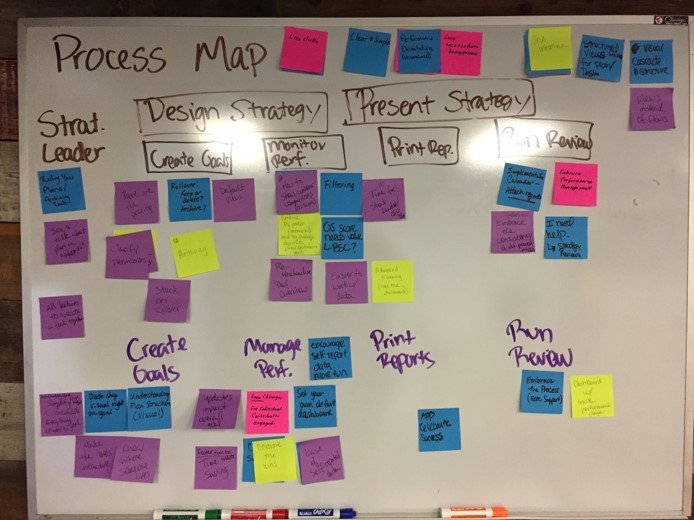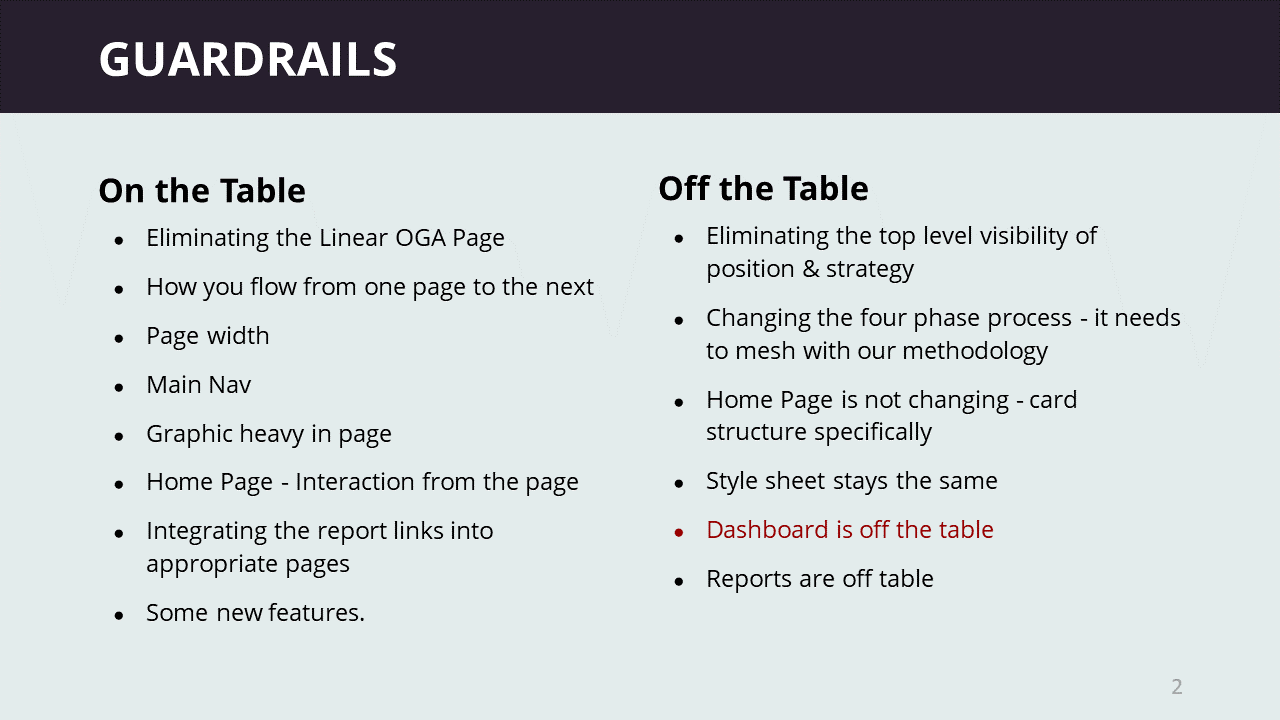We exist to transform organizations by transforming the lives of people within them. Great strategy and the culture to execute it doesn’t come easy, but it’s the tried-and-true path to success.
We’ve spend the better part of the last two decades building our organization and planning process to help our clients define their vision of success and build the roadmap to get there. During this time, we’ve evolved and perfected our planning process to help our clients no matter where they are in the process.
So, where did we get the idea to build the OnStrategy Platform?
Getting a plan completed is an accomplishment itself. But, there’s nothing that will kill a great plan faster than trying to manage it in spreadsheets. Lions and tigers and pivot tables, oh my! It can be done, but there is nothing inspiring, dynamic, or intuitive about managing your plan in data rows.
We loathe the administravia that can accompany strategic planning. It’s the reason we created the OnStrategy Platform.
Why the redesign?
We took a page out of our own book (quite literally) and started tuning into the feedback from our customers. The previous design and functionality of OnStrategy had stretched itself across four years, and our clients’ feedback pushed us to rethink how our platform can make managing their plan faster, easier, and more dynamic.
So, modeled from our process to inform the redesign of the OnStrategy Platform, here’s the key takeaways to help collect your customer feedback to drive your strategy:
Step 1: Collect Your Feedback
Before you start collecting feedback, be clear about what you need feedback on. Then, you can collect your feedback. You can do this on an as-needed basis, but it’s a good idea to keep a running, organized list of feedback so this step is less time consuming when you need to act on information quickly. At OnStrategy, we keep the Voice of the Customer documentation running and ongoing.
- Direct Contact with Our Customers – Collect feedback from your customers, be that a survey, customer interviews, or just in a passing conversation. We’re proud of the customer relationships we have formed and often create an open dialogue about our product and how it best suites their needs. If there is something the customer requests or suggests, we log it in our Voice of the Customer documentation to reference later.
- Collect Feedback from Your Sales Prospects and Team – For customers who just closed a contract or are very close to closing a contract, ask them how you can improve your sales process or product features. Often, they have good feedback on what they’re looking for in a product or service and may help identify something you can improve on to win more business.
- Use Your Other Data – Helpful data from tools like Google Analytics can give insight into what your buyer behavior looks like.
- Internal Feedback – Your employees have informed opinions on your product, service, and business. Don’t forget to tap into them either via survey, interview, or a brainstorming session to help you identify the information you need to make strategic decisions. In some cases, keeping staff feedback confidential is a good way to ensure you’re receiving true and honest information. For us, we used our client services team to learn and brainstorm how we might streamline the OnStrategy platform to make it more useful for their clients. Here’s what our sticky-note feedback and brainstorming session looked like:

Step 2: Analyze Feedback and Create Your Guiding Themes
So you have all this amazing information – now you need to analyze it and find the trends! The output from analyzing your feedback is to create a list of guiding themes and facts to help you make strategic decisions. You can structure it however you might like, but it could look like:
- A list of recorded trends with a tally count on responses. This is great for seeing the most common delivered feedback within a data set.
- Unique “newspaper” headlines that clearly articulate themes in your feedback. Think front-page, thought-provoking headlines that paint a clear picture with few words.
- A list of “what’s on the table” and “what’s off the table” from your feedback. In the case of our application redesign, this worked best for us. We had a lot of amazing ideas and feedback, but we needed to solve the most common customer imperatives to keep our development timeline and budget in scope. Here’s what it looked like:


Step 3: Act On It!
This step is different for every organization, but you must act on the feedback you receive. Ignoring feedback you don’t want to hear or creating a plan that isn’t based on the needs of your customer and organization is a sure way to kill your plan before it even starts.
In our case, the we used the guiding principles to completely redesign our application to make it faster, easier, and more dynamic for our clients to both create and execute their plan. It wasn’t just a redesign. It was a fundamental improvement to our strategic management process based on the feedback from our clients.











